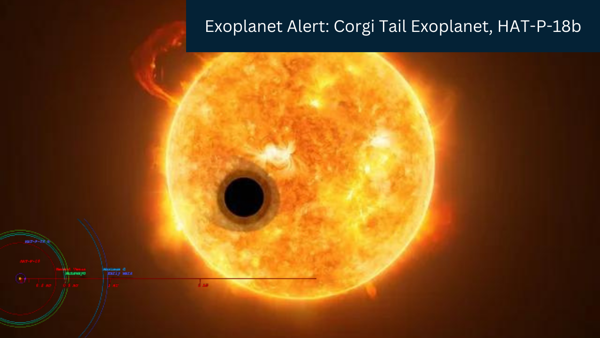
Science & Space
Exo-Planet Reality Check: A Tiny Tail Exoplanet Is losing Its Atmosphere Due To Its Extreme Proximity To Its Parent Star
NASA sends its most powerful and expensive space telescope, James Webb Space Telescope, to examine the features of exoplanets in detail. An exoplanet named HAT-P-18b is moving around its stars and constantly losing its atmosphere and some of its body mass due to its extreme proximity to its star.
This exoplanet was discovered in 2010 as a Saturn-like, Jupiter mass planet, but when scientists used James Webb to examine the planet in detail and wanted to know everything about that mysterious alien body, they discovered something incredible: the exoplanet has a faint tiny tail, which was not visible before due to the instrument's constraints.
Tiny Tail Of HAT-P-18b
JWST is finally doing what it is designed to do: It is revealing astounding astronomical secrets that are astounded the world with extremely precise object details. A team of scientists led by Guangwei Fu of John Hopkins University used JSWT to target the HAT-P-18b and discovered several molecules in the planet's upper atmosphere using the Near Infrared Imager and Slitless Spectrograph (NIRISS) instrument.
They discovered that the planet's atmosphere is made up of Helium and a trace amount of water vapor. The discovery of Helium was obvious because the planet was orbiting its star in close proximity and stars are made up of Helium and Hydrogen because stars generate heat through Nuclear Fusion. The presence of Helium was discovered by scientists using the Helium absorption option signature during spectrum analysis.
According to the team's findings, HAT-P-18b is dragging a faint tail of escaping helium. Similar features have been discovered trailing behind other planets, but this one was so subtle that ground-based observatories had previously missed it.
Astounding Facts About HAT-P-18b
The Gas Giant is orbing its K-type parent star HAT-P-18.
Its mass is nearly 0.0197 times the mass of the Solar System's gas giant Jupiter. In comparison to its mass, its radius is quite large and is 0.995 times Jupiter, implying that the exoplanet's size is nearly equal to Jupiter's and it is quite puffy. Such a lower mass of the planet is for its extremely lower density and its density is only 0.25g/cm3.
The exoplanet only takes 0.0151 years, equivalent to 5.548 days to complete one revolution around its star. The planet's eccentricity is 0.08, indicating that its orbital path is nearly circular: eccentricity basically indicates how eclipsed the planet's orbit is.
The orbital radius of the planet is 0.0559 AU or 8362520.97 kilometers. The HARPS-N spectrograph mounted on the TNG telescope was used to acquire a spectroscopic time series spanning a full transit. HAT-P-18b was discovered by the Primary Transit detection method. The Rossiter-McLaughlin effect was measured using the HARPS-N pipeline's extremely precise radial velocity measurements. In 2014, scientists used the Rossiter-McLaughlin transit detection method, which also revealed the planet's retrograde motion, which means the planet is moving anti-clockwise.
The surface temperature of the planet is 841.0K with a surface gravity of 2.734 m/s2.
HAT-P-18 - Parent Star of HAT-P- 18b
HAT-P-18 is 527.2 light years away from the solar system and it is a K-type star. The K-type stars are hydrogen burning Orange dwarfs whose mass is between 0.6 to 0.9 times the Solar system's Sun.
Its surface temperature is also lower than the sun's because these kinds of stars come between M-type main sequence stars (Red Dwarfs) and G-type main sequence stars (Yellow/White). Our Sun is a G-type star and for a K-type star, the average surface temperature is between 3900K and 5300K.
K-type stars are particularly interesting in the search for extraterrestrial life because of their stability and lengthy lifespan.
The well-known K-type stars are Alpha Centauri B (K1V) and Epsilon Indi (K5V).
A question arises is that: What is the need of exploring such a Westland? A planet where life is nearly impossible and life like earth simply can not exist, then why space agencies are seeking and exploring planets like these?
The explanation for this is straightforward: scientists are looking for gas giants to comprehend the essential elements of the planet in order to discover the mystery of the planet's genesis and evolution. Because when scientists are able to investigate the reasons for the planet's evolution, they will discover the answer to the vexing question of how the universe was formed and how it is evolving over time. And for scientists, the HAT-P-18b is a prize catch.

0 Comments